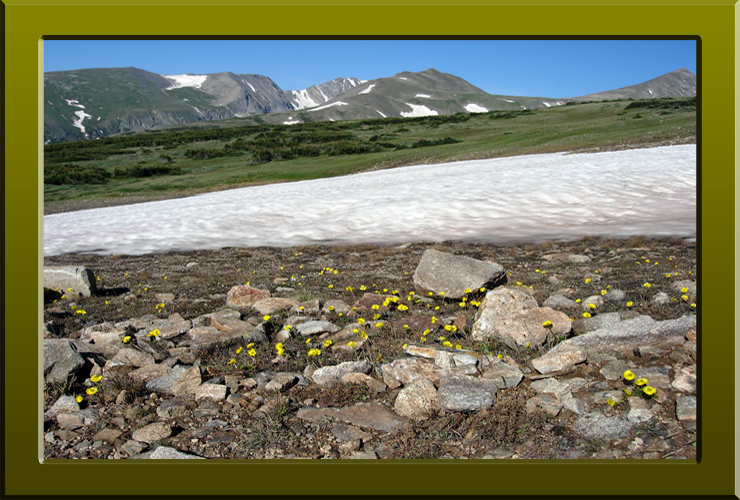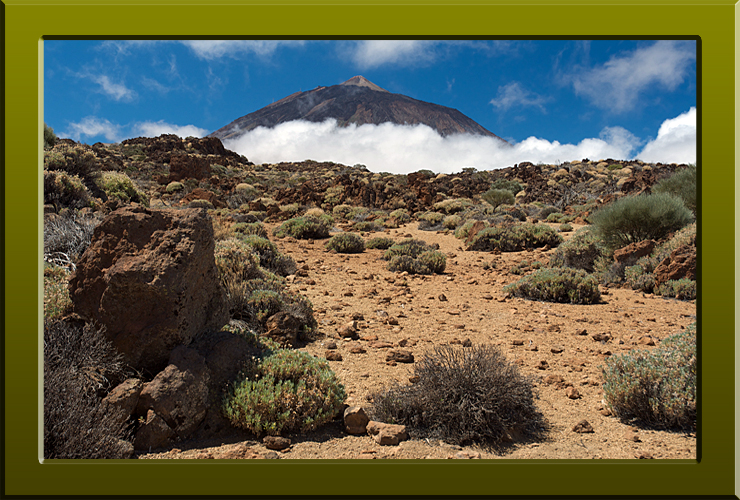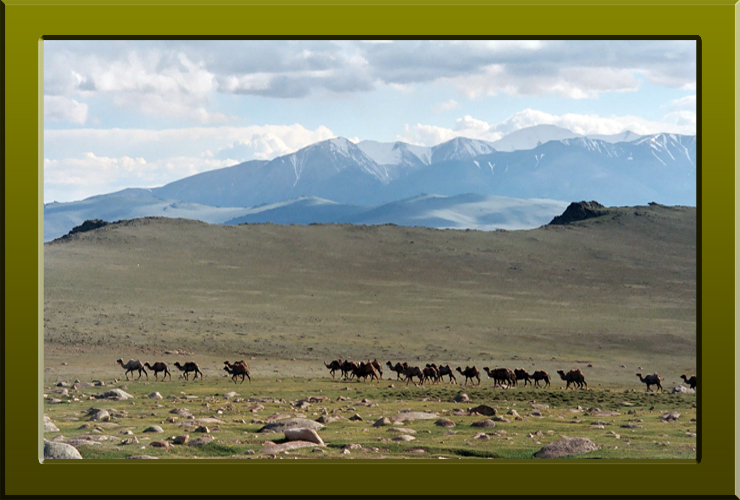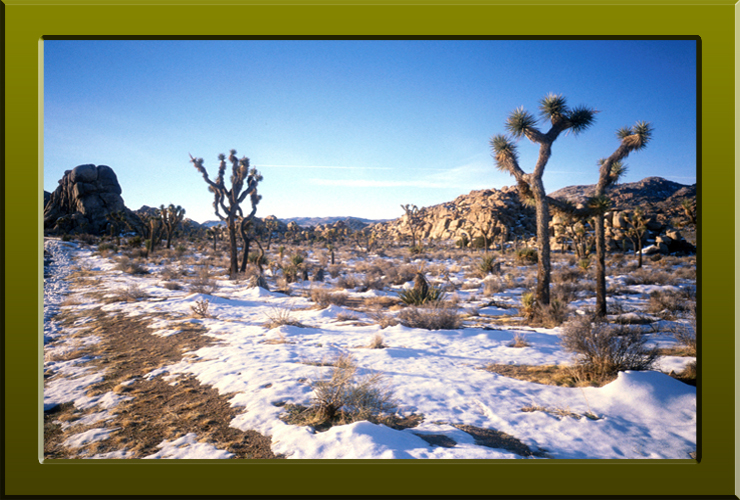Holarctic Biokingdom
As the largest of the world’s biokingdoms, the Holarctic Biokingdom covers more than half the world’s terrestrial habitats. It encapsulates all of Europe, almost all of North America, all of extratropical Asia and all of extratropical northern Africa. The plant life comprises some 60 endemic or near endemic families of vascular plants. The following nine bioregions are recognised
Circumboreal BioRegion
This BioRegion corresponds roughly to the area covered by ice during the last Ice Age. There are no endemic plant families and the number of endemic genera is comparatively small but the area forms a distinctive unit. Within this BioRegion the following 14 bioprovinces are recognised:
Altai Mountains in the Altai-Sayan BioProvince of the Circumboreal BioRegion (Copyright © 2010 Barbara Jones).
Eastern Asiatic BioRegion
This Bioegion is characterized by the presence of very old lineages of gymnosperms a phenomenon that is thought to indicate the antiquity and general relict nature of the area. The flora is very rich and distinctive with more than 20 endemic plant families and over 300 endemic genera. The following 13 bioprovinces are recognised:
| Manchurian | Sakhalin-Hokkaido | Japanese-Korean | Volcano-Bonin | Ryukyu |
| Taiwanian | Northern Chinese | Central Chinese | SE Chinese | Sikang-Yunnan |
| Northern Myanmar | Eastern Himalayan | Khasi-Manipur |
North American Atlantic BioRegion
This Bioregion stretches across North America from the Atlantic Ocean to the Rocky Mountains and from south central Canada to the Gulf of Mexico. The flora is relatively rich and characterised by a high level of endemism. There are two monotypic, endemic families, Hydrastidaceae and Leitneriaceae, and perhaps 100 endemic or near-endemic genera. Despite this level of endemism, the linkage between the floras of eastern North America and eastern Asia is well known. At least 74 genera are found in both areas. Another 68 are found in eastern North America and Eurasia and also in western North America and/or the Mexican highlands. Within this BioRegion the following 3 bioprovinces are recognised:
| Appalachian | Atlantic and Gulf Coastal Plain | North American Prairies |
Rocky Mountains BioRegion
Included here is the high Rocky and Cascade-Sierran mountain systems of western North America, along with the Coastal Ranges south from Kodiak Island of Alaska to the San Francisco Bay Area of California. This region has no strictly endemic vascular plant families but has many endemic or near-endemic genera and numerous endemic species. Other than Arnica, Castilleja, Erigeron and Lomatium, no genus seems to have its major center of diversity in this BioRegion. The vegetation is dominated by coniferous forest with the greatest diversity of conifers in the New World. Above the timberline there are considerable areas of alpine tundra with many arctic species, especially in the more northern areas. Within this BioRegion the following 2 bioprovinces are recognised:
| Vancouverian | Rocky Mountains |

Niwot Ridge (Colorado Rockies) with Ranunculus adoneus in the foreground in the Rocky Mountains BioProvince of the Rocky Mountain BioRegion (Copyright © 2010 Barbara Jones)
Macaronesian BioRegion
Macaronesia is a modern collective name for several groups of islands in the North Atlantic (Madeira, the Azores, the Canary Islands and Cape Verde). The name comes from the Greek for 'blessed islands', a term used by ancient geographers for islands to the west of the Straits of Gibraltar. The islands are volcanic in origin, formed over successive phases of volcanic activity and interceding periods of erosion, resulting in spectacular and rugged scenery and unique ecosystems, characterised by high levels of endemism in the flora and fauna. There are over 30 endemic plant genera with several occurring on more than one of the island groups, and there are various other common floristic features. Within this BioRegion the following 4 bioprovinces are recognised:
| Azorean | Madeiran | Canarian | Cape Verdean |

Mount Teide Tenerife in the Canarian BioProvince of the Macaronesian BioRegion (Copyright © 2010 Peter Martin Rhind)
Mediterranean BioRegion
This Bioregion includes all of the area surrounding the Mediterranean Sea together with the sub-Mediterranean zone around the Crimea in the Black Sea. Its boundary generally conincides with the extent of Mediterranean forests of Quercus ilex. There appears to be just one endemic plant family (Aphyllanthaceae) but there are probably about 150 endemic genera. Within this BioRegion the following 9 bioprovinces are recognised:
| South Moroccan | Southwestern Mediterranean | South Mediterranean | Iberian | Balearic |
| Liguro-Tyrrhenian | Adriatic | East Mediterranean | Crimean-Novorossiysk |

Cape de Formentor (Mallorca) in the Balearic BioProvince of the Mediterranean BioRegion (Copyright © 2010 Peter Martin Rhind)
Saharo-Arabian BioRegion
Included here is all the extratropical parts of the Sahara and Arabian Peninsula, the Sinai Peninsula, part of southern Palestine, part of Jordan and the southern part of the Syrian Desert. The area has about 30 endemic genera and over 300 endemic species. Within this BioRegion the following 2 bioprovinces are recognised:
| Saharan | Egyptian-Arabian |
Irano-Turanian BioRegion
This vast area includes parts of the Iranian Plateau, parts of Anatolia, parts of Syria and the Syrian Desert, parts of Palestine, parts of Jordan, upper Mesopotamia, parts of the Armenian Highlands, Hyrcania, parts of the Hindu Kush, the southern slopes of the western Himalayas and southeastern European Russia and eastern Transcaucasia as far as the Gobi. It has at least 330 endemic genera and a huge number of endemic species. Within this BioRegion the following 12 bioprovinces are recognised:
| Mesopotamian | Central Anatolian | Armeno-Iranian | Hyrcanian | Turanian |
| Turkestanian | Northern Baluchistanian | Western Himalayan | Central Tien Shan | Dzungaro-Tien Shan |
| Mongolian | Tibetan |

Mongolian steppe looking towards the Altai Mountains in the Mongolian BioProvince of the Irano-Turanian BioRegion (Copyright © 2010 Sue Shaw)
Madrean BioRegion
This BioRegion comprises the American Southwest and adjacent areas of northern and central Mexico. It takes its name from the Sierra Madre Occidental of Mexico and has an exceedingly rich and diverse flora with at least three endemic plant families (Fouquieriaceae, Setchellanthaceae and Simmondsiaceae). Five other families, Crossosomataceae, Garryaceae, Lennoaceae, Limnanthaceae and Stegnospermataceae, have their principal development here and several others e.g. Onagraceae, Polemoniaceae and Hydrophyllaceaehave have their major centres of diversity here. More than 250 genera and probably more than half of the species are endemic. Many of the genera and species are common to two or more of the Madrean bioprovinces. Most of the Madrean taxa are adapted to arid-desert or Mediterranean-type climates. Within this BioRegion the following 4 bioprovinces are recognised:
| Great Basin | Californian | Sonoran | Mexican Highlands |

Joshua Tree in the Sonoran Desert in the Sonoran BioProvince of the Madrean BioRegion (Copyright © 2010 Barbara Jones)










